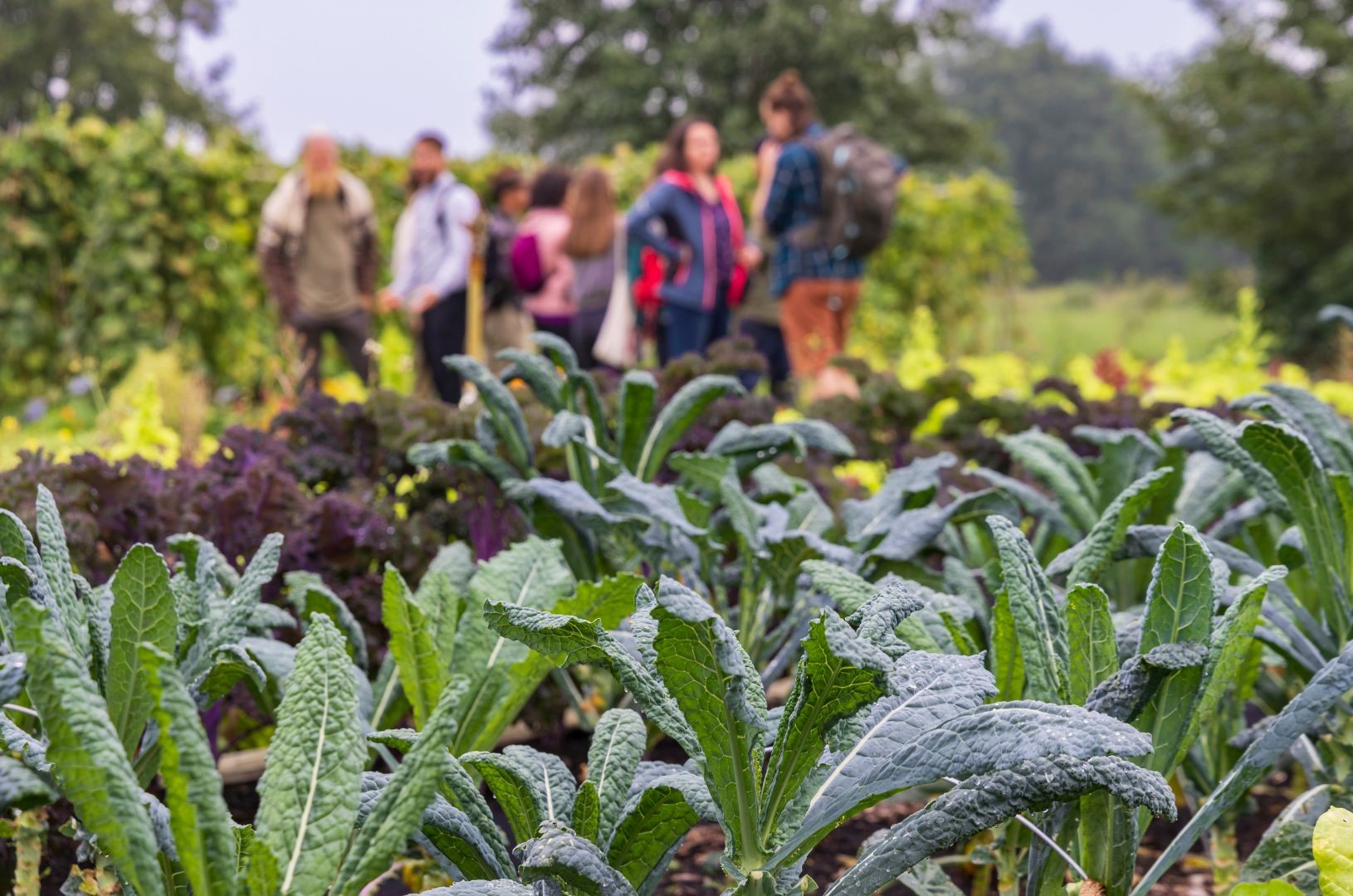Socioeconomic Benefits of Nature-Based Solutions in Communities
The Socioeconomic Impact of Nature-Based Solutions: Enhancing Community Resilience and Environmental Health
Introduction
Nature-based solutions (NBS) use natural processes and ecosystems to address social challenges while promoting environmental well-being; NBS differs from green projects by understanding that they require the natural process of building thriving and resilient ecosystems that might have been degraded over time.
Green projects include green infrastructures, solar and wind energy, etc., primarily mechanical and engineering installations that do not impact natural ecosystem processes and restoration. Types of NBS projects include:
- Forest conservation REDD+,
- Afforestation/Reforestation (A/R),
- Improved forest management,
- Blue carbon,
- Soil carbon and
- Agriculture, grassland, and peatlands management
Reforestation of all physically feasible areas in the world’s deforested mangrove areas could support the absorption of 671 to 689 Tg CO2 equivalent globally in 40 years, 60% more than reforesting the same global surface area in beaches (more marginal locations).
Agroforestry is a good option for sequestering carbon on agricultural land, a source of greenhouse gas emissions. Agroforestry systems represent an attractive and profitable opportunity for carbon sequestration, among other land-based options, as they increase agricultural income and support biodiversity without affecting food security. These solutions are critical to achieving the Sustainable Development Goals and strengthening community resilience. Nevertheless, challenges faced by implementing NBS include financing, human rights protection, intergovernmental complexities, etc. In this article, we’ll explore the socioeconomic impact of NBS on communities worldwide.
Impacts of NBS projects on communities
- Conservation of Community Natural Resources
Efficient management of natural resources within communities has become difficult due to anthropogenic invasion and climate change effects. Adopting NBS is a strategic pathway to curb most of these occurrences; it enhances the conservation and management of these depleting natural resources within our communities and environments. Some of these resources serve as a means of living for communities, protection of cultural values, and location for spiritual motivation.
In 85 tropical countries with 5 billion households, about 1.2 billion people (30%) in tropical countries’ population are mostly reliant on nature. In locations where people depend highly on nature for their daily needs, nature-based strategies that sustain, restore, and judiciously manage ecosystems must be carefully designed to enhance inclusive human development and environmental benefits.
- Community Resilience and Improved Livelihood
Nature-based solutions (NBS) are cost-effective, nature-inspired solutions that provide environmental, social, and economic benefits. Green jobs are created through activities like reforestation, wetland restoration, and sustainable agriculture, helping local communities to benefit from employment opportunities. NBS helps poor rural residents achieve food security and access nutritious food. Small farmers grow 60 to 80% of the food produced in developing countries.
Therefore, the ability of the poorest rural people to access a diverse and nutritious diet depends on the crops they grow and the livestock they keep. NbS enables climate-resilient food production, helping farmers improve soil health, adapt effectively, and manage land and water resources. Their global approach also allows the integration of nutrition and food security concerns. For example, farmers could double milk and egg production in the Upper Tana region of Kenya by switching to more productive cows, goats, and chickens. They also employ conservation agriculture practices, including reduced soil disturbance and crop rotation to maintain soil health, which improves soil and labor productivity while significantly reducing costs.
Household surveys were conducted as part of Global Ecology and Conservation research to ascertain people’s perceptions of Ghana and Tanzania on the impact of protected areas on livelihoods and community development. The data revealed that out of the 184 and 181 households interviewed, 64% of respondents in Ghana indicated that the Mole National Park positively impacts their livelihoods and community development, and 40% of their counterparts in Tanzania shared the same view about the Tarangire National Park.
- Mitigate high Temperatures and Atmospheric Air Pollution in Global Communities
Over 60% of urban communities contribute to global greenhouse gas (GHG) emissions through residential, commercial, and transportation activities. Carbon sequestration by urban vegetation and natural resources, such as parks, gardens, and residential lawns, can provide a cost-effective system to offset carbon emissions. Afforestation and reforestation, planting trees, and restoring degraded forests help sequester carbon dioxide (CO2). About 10 to 12 billion tons of CO2 equivalent per year can be saved through NBS efforts. This contributes to reducing the warming peak by about 0.3 °C. Metrics such as carbon sequestration rate, emission reduction rate, and carbon offset percentage help evaluate the effectiveness of NbS. Studies show that NbS can significantly reduce carbon emissions (up to 25%) in the transport, civil and industrial sectors. Combining NbS with existing measures could reduce total carbon emissions by 57.3% in 2030. NbS offers a powerful strategy to achieve carbon neutrality by sequestering carbon and offsetting emissions.
Challenges of Implementing Nature-based Solutions Projects
- Climate Finance
Despite the Cancun Adaptation Framework’s call for equal care, climate finance prioritizes mitigation over adaptation. Recent data shows a growing gap between available adaptation finance and need. Under the Paris Agreement, the annual transfer of $100 billion from developed countries to developing countries is not enough. By 2030, adaptation costs in developing countries could reach between USD 155 billion and USD 330 billion annually. The Glasgow Climate Accord focuses on doubling funding dedicated to adaptation by 2025. Urban areas, major carbon emitters, face disproportionate impacts of climate change. The challenges include:
- the loss of infrastructure,
- public health risks due to weather and
- reduced labor productivity
Urban heat islands caused by hard materials can increase the temperature of cities by up to 8°C compared to rural areas. Addressing nature-related challenges is complex from a financial perspective. Businesses, as well as governments, face knowledge gaps when it comes to nature-related finance. The G20 currently leads investments in NbS, allocating around $120 million per year to national projects. However, developing countries, which should benefit from global climate finance, face a financing gap. Currently, climate finance supports NbS for adaptation at USD 3.8-8.7 billion per year (about 0.6-1.4% of total climate finance in 2018). Urgent urban adaptation requires a larger share of climate finance for NbS projects. While organizations such as the Global Environment Facility, the Green Climate Fund, and the Adaptation Fund have supported NbS initiatives, a funding stream dedicated to urban NbS could drive transformative action change.
- Complexities in Governmental Policies
NbS implementation requires cross-sector collaboration, which can be challenging, especially for local governments in developing countries. Multi-level governance adds complexity to the process. The implementation and management of natural resources are overseen by many different groups, providing many common benefits, including at the societal level. Multi-level governance promotes cooperation and preparedness, essential to building capacity to address climate challenges. While these processes can be helpful in preparing local governments to respond to future crises, implementing them now can pose challenges due to existing barriers. Industry barriers often exist within their structures.
- Lagging of Appropriate Safeguards, Standards, and Guidelines for NbS.
In the NbS context, safeguards aim to prevent adverse impacts and promote positive ones. There are growing calls for safeguards and standards to guide the design and deployment of NbS. For example, the recent Glasgow Climate Accord addresses the need to ensure social and environmental guarantees related to natural resources, climate wells, and reservoirs. Standards describe the requirements to achieve a certain level of quality or performance and can be used as a basis for assessing conformity or quality.
Some key protection issues related to NbS include respect for IPLC rights, including land and natural resources, engagement and participation of stakeholder groups (including people of all genders) gender) and design actions that are sensitive to gender, transparency, accessibility, information, prevention of adverse environmental impacts, and long-term sustainability of interventions. The UNEA Resolution on NbS calls explicitly for respect for social and ecological protections consistent with the three “Rio Conventions,” including protections for Indigenous peoples and local communities (IPLCs).
Conclusion
In conclusion, Nature-based solutions offer a holistic approach that balances human well-being, economic prosperity, and environmental conservation. NBS emphasizes the restoration and resilience of ecosystems through natural processes, enhancing community resilience and mitigating high temperatures and atmospheric air pollution. By sustainably managing ecosystems, NBS supports inclusive human development while benefiting the environment. Green jobs created through NBS activities contribute to improved livelihoods and carbon sequestration efforts help offset emissions. The positive impact of NBS is evident in protected areas like the Mole National Park in Ghana and the Tarangire National Park in Tanzania. Despite challenges related to financing and intergovernmental complexities, NBS represents a powerful strategy for achieving both environmental and social goals.
Reference
- Dam, P. (2019). “Salt marsh restoration,” in Coastal Wetlands, eds G. M. E. Perillo, E. Wolanski, D. R. Cahoon and C. S. Hopkinson (Amsterdam: Elsevier), 817–861. doi: 10.1016/B978-0-444-63893-9.00023-X.
- Balbi et al., 2019 S. Balbi, O. Selomane, N. Sitas, R. Blanchard, I. Kotzee, P. O’Farrell, F. Villa Human dependence on natural resources in rapidly urbanizing South African regions Environ. Res. Lett., 14 (4) (2019), p. 044008, 10.1088/1748-9326/aafe43
- Abukari and Mwalyosi, 2018a, H. Abukari, R.B. Mwalyosi Comparing conservation attitudes of park-adjacent communities: the case of Mole National Park in Ghana and Tarangire National Park in Tanzania Trop. Conserv. Sci., 11 (2018), pp. 1-14, 10.1177/1940082918802757
- Lanau, M., L. Herbert, and G. Liu. 2021. Extending urban stocks and flows analysis to urban greenhouse gas emission accounting: A case of Odense, Denmark. Journal of Industrial Ecology 25: 961–978.
- Anderson, V., and W. Gough. 2020. Evaluating the potential of nature-based solutions to reduce ozone, nitrogen dioxide, and carbon dioxide through a multi-type green infrastructure study in Ontario. Canada. City and Environment Interactions 6: 100043.
- Upper Tana Catchment Natural Resource Management Project, https://www.ifad.org/en/web/operations/-/project/1100001544.
- Strengthening Indigenous peoples’ communities and their organization, www.ifad.org/en/ipaf.
- Network Nature. Nature-Based Solutions Knowledge Gaps. 2022. Available online: https://networknature.eu/NbS-knowledge-gaps (accessed on 10 September 2022).
- Seddon, N. Harnessing the potential of nature-based solutions for mitigating and adapting to climate change. Science 2022, 376, 1410–1416.
- Kabisch, N.; Frantzeskaki, N.; Pauleit, S.; Naumann, S.; Davis, M.; Artmann, M.; Haase, D.; Knapp, S.; Korn, H.; Stadler, J.; et al. Nature-based solutions to climate change mitigation and adaptation in urban areas: Perspectives on indicators, knowledge gaps, barriers, and opportunities for action. Soc. 2016, 21, 39.
- Nesshöver, C.; Assmuth, T.; Irvine, K.N.; Rusch, G.M.; Waylen, K.A.; Delbaere, B.; Haase, D.; Jones-Walters, L.; Keune, H.; Kovacs, E.; et al. The science, policy, and practice of nature-based solutions: An interdisciplinary perspective. Total Environ. 2017, 579, 1215–1227.
- Oijstaeijen, W.; Passel, S.; Cools, J. Urban green infrastructure: A review on valuation toolkits from an urban planning perspective. Environ. Manag. 2020, 267, 110603.
- Fletcher, M.S.; Hamilton, R.; Dressler, W.; Palmer, L. Indigenous knowledge and the shackles of wilderness. Natl. Acad. Sci. USA 2021, 118, e2022218118.
- Nature-Based Solutions in Humanitarian Contexts. 2021. Available online: https://www.iucn.org/sites/dev/files/NbS_in_humanitarian_contexts_key_messages_1.pdf (accessed on 28 December 2022).
Further reading
Control Nile Tilapia Stocks in Polyculture system using African Sharptooth Catfish
Cacao Certification as a driving force for adopting Improved Farming Technologies in Ghana, Africa
How to use biochar as a water contaminants detoxifier in fish farming












































































